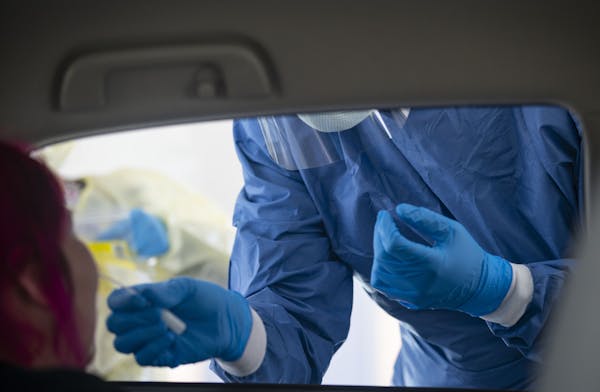Amid a recent surge of new COVID-19 cases among younger adults, an additional 589 new infections were reported Thursday, pushing the number of cases past the 40,000 mark.
Altogether, 40,163 people are known to have caught COVID-19, including 1,490 who have died.
Five more deaths due to the new coronavirus were announced, with four among residents of long-term care facilities.
In the past week, the number of COVID-19 cases among people in their 20s increased 13%. With 8,990 cases since the pandemic began, they are the largest age group of those who have been sickened.
"Young people from across the state are accounting for the bulk of cases in the last two weeks," Kris Ehresmann, state infectious disease director, said Wednesday.
Many of the exposures are happening at bars and restaurants, she noted.
While the reopening of those establishments was expected to lead to more COVID-19 cases, Ehresmann has said that wearing masks and maintaining social distancing can help control the growth rate of new cases.
An additional concern is that once infected, younger adults will spread the disease to others in the community, including those who are most vulnerable to COVID-19 complications.
Older Minnesotans with chronic medical conditions, including heart, lung or kidney disease, comprise the bulk of those who need hospital care due to COVID-19.
Only 7% of all hospitalizations have been patients in their 20s.
Statewide, there were 251 people in the hospital due to COVID-19, a one-day decrease of 14. Of those in the hospital, 116 were in intensive care beds.
The new COVID-19 cases were detected by the 12,535 tests that were performed in a 24-hour period ending at 4 p.m. Wednesday. That is a one-day increase of 4,894 tests.
Due to longer lag times in getting test results recently, as well as a disease incubation period for COVID-19 that could be up to two weeks before symptoms develop, the new cases reported Thursday could be the result of infections that occurred several weeks ago.
In addition to bars and restaurants, disease detectives are finding that some cases can be traced back to large house parties and bonfires, Ehresmann said.
Most people infected with COVID-19 have mild or even no symptoms, but they still can pass the disease on to others, even when they don't feel sick.
Since the pandemic began, a total of 35,193 are no longer considered needing isolation due to COVID-19 infection.
Glenn Howatt • 612-673-7192

Trail section at one of Minnesota's most iconic spots closing for rehab

Will 'shotgun only' zone for deer in southern Minnesota be abolished?

Four Minnesotans catch salmonella in outbreak linked to basil sold at Trader Joe's

